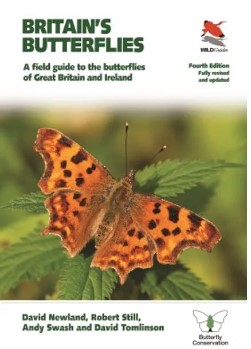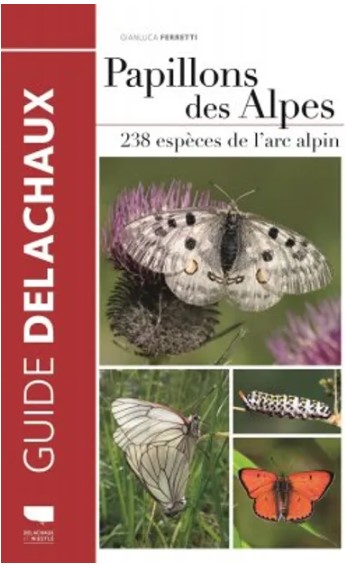Those of us who live in central and northern Europe do not generally expect to see butterflies in winter – probably not much between November and March, though with global warming, that is changing.
Butterflies are not that common in southern Europe in winter either, though there is a good chance of seeing some. Certainly not enough to make a specific butterfly-watching trip worthwhile. Except perhaps in the Canary Islands, Madeira and the Azores, which may be warm enough for a few species to be flying, and those species to be different from the rest of Europe. But if you happen to be anywhere in the south, perhaps watching birds, hiking, or just enjoying the countryside, here are a few that you might come across.
Of these, all except the first two are fairly common and widespread, and can also be seen much later in the year. I’ve seen all of them in the Algarve and Andalucia at this time of year.
Species

Green-striped White
Euchloe belemia
Found in the southern parts of Spain and Portugal from January to June. Those on the Canary Islands now thought to be separate species.
Distinctive underwing pattern.
African Grass Blue
Zizeeria knysna
Canary Islands, North Africa, Spanish Mediterranean coastal areas, but this one photographed in the Algarve, Portugal.
Can be seen almost year-round in a series of overlapping broods.
Purple-blue upperside, greyish underside. Small and inconspicuous.


Clouded Yellow
Colias croceus
The only clouded yellow species likely to be seen at this time of year. Mostly Mediterranean at this time, migrates into central Europe later. All year round on Canary Islands. Female is much paler.
Small Copper
Lycaena phlaeas
The only copper species likely to be seen at this time of year – all year round in Canary Islands, less so elsewhere. It’s worth getting to know the underside pattern for comparison with later species.

Large White
Pieris brassicae
Similar species on Canary Isles Pieris cheiranthi year round, as do some smaller white species.
This species has large black tips on the forewings


Painted Lady
Vanessa cardui
Long-distant migrant that starts in north Africa in winter, and moves north through Europe. American painted ladies are seen on the Canaries and Madeira.
Small Tortoiseshell
Aglais urticae
Found throughout Europe. Hibernates in cooler areas but up to three generations in southern Europe where it can be seen almost year round.


Speckled Wood
Pararge aegeria
Seen in warmer months in most of Europe, but also in winter in the Mediterranean area. This is a south-western specimen, in the north and east they are brown and cream.
Canary Islands
Probably the most likely place to find butterflies in mid-winter are the Canary Islands, due to their southerly position. Their proximity to the coast of Africa also means there is a good chance of finding species not seen anywhere else in Europe.
For example, Canary Blues Cyclyrius webbianus were seen in unusually good numbers on Gran Canaria on flower-rich banks and sheltered mountain tracks in the central highlands during late Jan / early Feb 2024. The endemic Canary Red Admiral Vanessa vulcania and the regular Red Admiral Vanessa atalanta were seen across Gran Canaria during Jan/Feb – a good opportunity to see them side by side in woodland habitat. In February, on the island of Fuerteventura Plain Tiger Danaus chrysippus butterflies were recorded swarming around several King’s Crown Calotropis procera trees. Greenish Black-tip Euchloe charlonia was also recorded. (Information gleaned from the Butterflies EUROPE Facebook group)
Bookshop
Many butterfly books seem now to be out of print. Often I have found local field guides in the visitor centres of national parks and wildlife reserves, but not obviously available via the Internet. Click on the book covers below for more information.
If you use a phone app for ID, always double-check the result – google the species to make sure it is found in that area at that time of year.
Covering more than 400 species across the continent, Collins butterfly guide is hardly a pocketable field guide. It does, however, include a wealth of background information and is worth a place on any butterfly-lovers bookshelf.
If you can’t find a species list local to where you are visiting, it is possible to compile a list from here.
But it’s better to find something more local to make ID quicker and easier.
My preferred book for Britain is the second edition of Britain’s Butterflies. The fourth edition covers in detail the identification of all 59 butterfly species that breed regularly, as well as four former breeders, 10 rare migrants and one species of unknown status. It also features new introductory sections on the identification of more difficult groups; revised maps that show the latest distributions recorded by the UK Butterfly Monitoring Scheme; expanded sections on food plants and on recording and monitoring; a new section on climate change; and a revised species order reflecting the latest taxonomy.
These two books were both published in several languages – English, French, German and Italian. They may not be available in all of them now.
Click on covers for more information.
European Butterfly Monitoring Scheme
Become a volunteer counting butterflies!!
Help us count butterflies, it will increase our knowledge of butterflies and we could protect them better. There are already thousands of volunteers throughout Europe helping in butterfly conservation.
If you would like to join eBMS and collaborate in the Butterfly Monitoring Scheme you just need to register. Follow this link to the My Data section and you will find a Quick Guide for setting up butterfly monitoring.
– Join one of the biggest citizen science networks
– Monitoring butterflies in your area, you will contribute to science
Includes access to some very useful field guides, eg Spain – Common species
Useful Websites
Butterflies of France – species list, photos and information including ID tips
Butterfly Conservation Europe is a partnership organisation focused on halting and reversing the decline of butterflies, moths and their habitats throughout Europe.
Butterflies EUROPE Facebook group – if you’re on Facebook, this is an excellent resource. There will probably be groups for each country in Europe, so a search for whichever country you want to visit is worthwhile – although they may be just in the language of that country, there will be someone who can answer a question in English.








